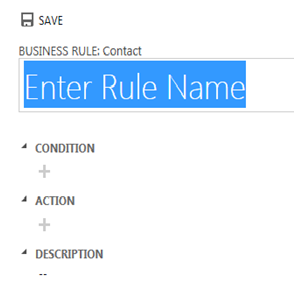In Microsoft Dynamics CRM 4.0 and Microsoft Dynamics CRM 2011, if you wanted any type of automation on your record form (i.e. if you wanted to show different fields on the Payment form depending on the type), you would need to code in the logic using Javascript. For most people, that meant either hiring help to write the code, or going without it. But in Microsoft Dynamics CRM 2013, the Business Rules Engine changes all of that.

Now, however, the process is much simpler. You can simply construct your rule in Dynamics CRM logically as you would in your business using “If this…then that…” logic. This new feature is as powerful as it is flexible, allowing you to customize the conditions based on other field values, such as “If Membership Due date = one week from today” and create triggers based upon that condition. You can display a message, show or hide fields, require or un-require fields or set field values using that trigger while allowing a call to another workflow or trigger in yet another process. This change in the functionality increases the system’s automation level and decreases the need for user intervention, all without requiring the use of Javascript. This change allows users of Microsoft Dynamics CRM to get more out of the system with minimal effort while greatly increasing your return on investment.
If however, you are looking for support for Microsoft Dynamics CRM, the CRM specialists at RSM are certified professionals with an average of fiftenn years experience. We can help you config the system according to your long-term business needs. Contact our professional for more information – crm@mcgladrey.com or by phone at 855.437.7202.
Read more articles on the new release of Microsoft Dynamics CRM 2013.
By: Zach Greenbaum – Virginia Microsoft Dynamics CRM partner

 RSMUS.com
RSMUS.com